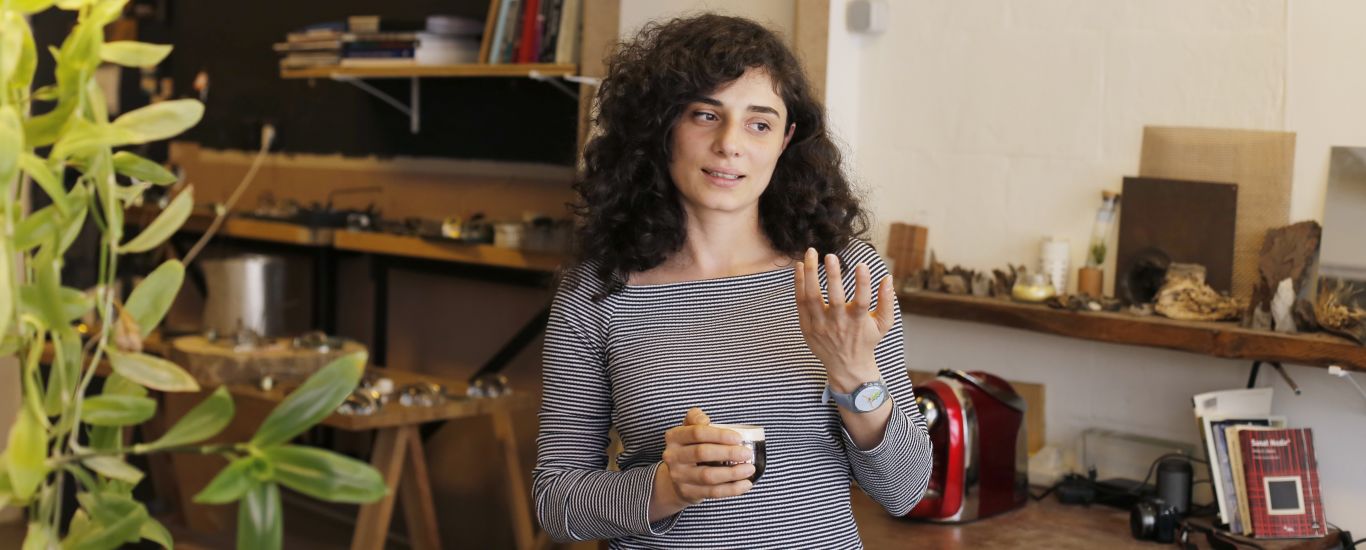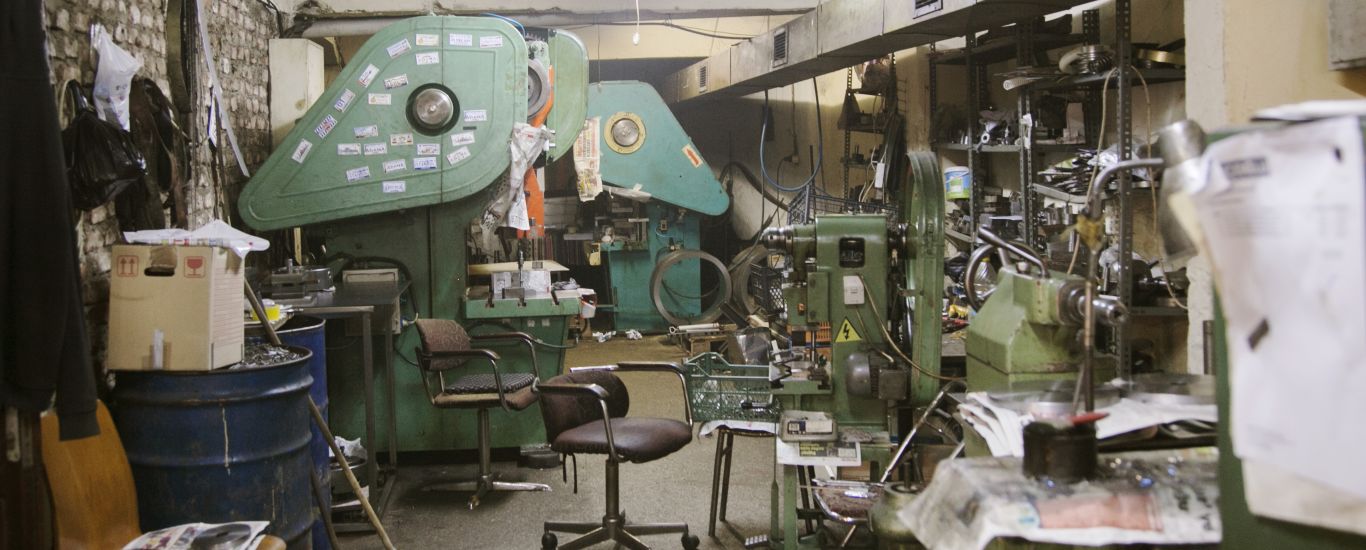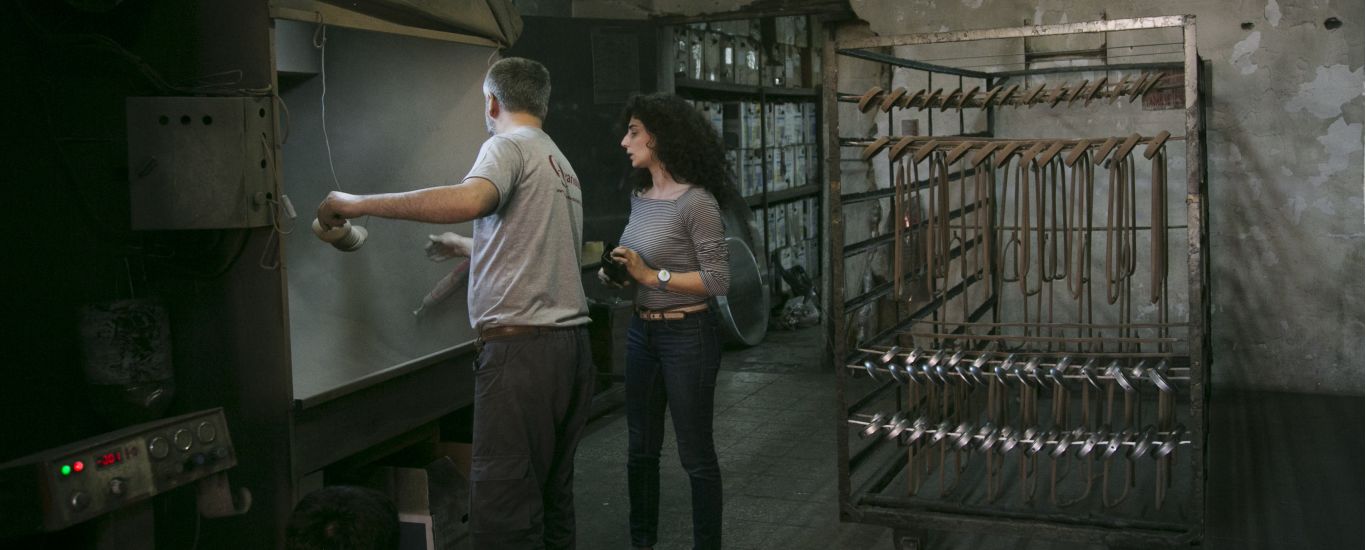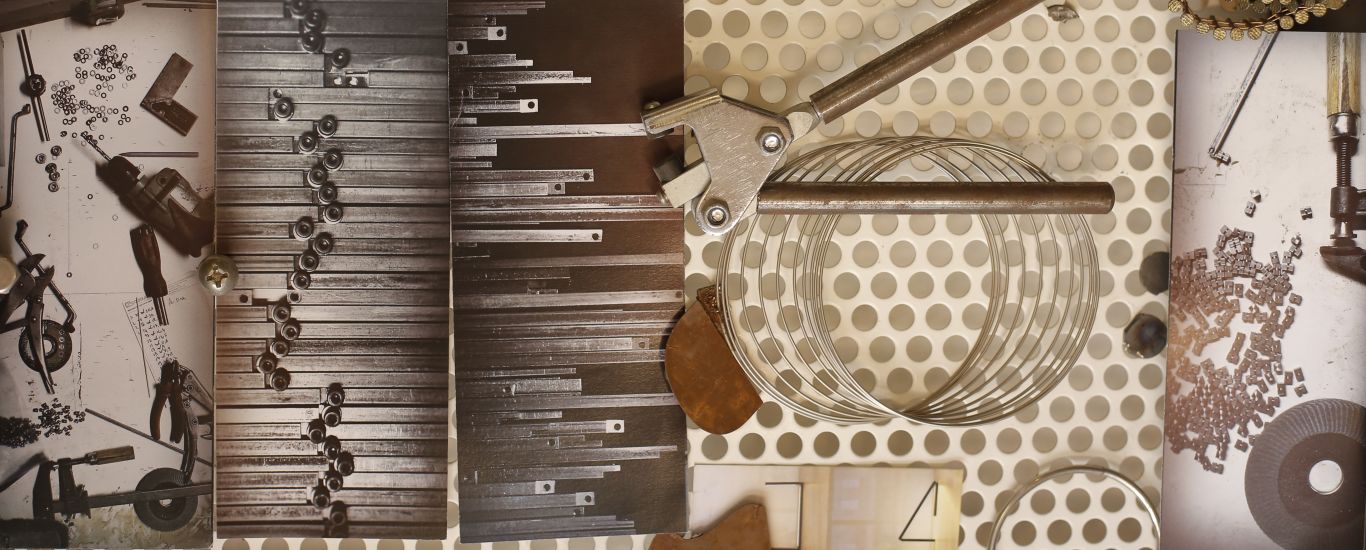Interview and photos: Elif Kahveci
More photos can be accessed here.
You use the term holistic to define your approach towards architecture, which obscures the limits of design, art, and architecture. What do you mean by holistic architecture?
I see architecture as an ecosystem; not a discipline in which pieces are designed separately, but an art for creating atmosphere that has social, psychological, political, and biological extents. Instead of categorical situations, I care about the holistic effect, how it interacts with the environment and with bodies, and how it behaves.
It would not be wise to reduce architecture into a physical act of production. Especially from a social point of view, the connection we can observe between the way buildings are built and the people who live in it underlines the fact that architecture requires an understanding that transcends structural issues.
What makes the notion of atmosphere that important to you? Does this have anything to do with the fact you studied cinema in addition to architecture?
We can see the body itself and the layers that surround it as sequences of space. The reason I use atmosphere instead of space is the term called apeiron. Apeiron means something from which everything is born and into which everything disappears, ‘not here’, ‘undefinable’, ‘indeterminable’, ‘limitless’. Not necessarily in a quantitative sense. I am referring to layers of atmosphere which enable different possibilities; those we cannot separate from the notion of time since we are not certain which possibilities will be enabled and when –they vary in accordance with the body, light, and movement. An atmosphere in which actions and the record of the body’s movement within the space alter every single time…
I believe architecture and cinema are quite similar disciplines with regard to the ways of interpreting space as series of sequences, in addition to how they are constructed and how an atmosphere is created.

Can you elaborate on these atmospheres with examples, especially with regard to their relationship with the body and objects?
The first examples that come to my mind are OCULUS, the video performance we realised in the single-domed hall of Tophane-i Amire building, and SURUHU at Nakilbent Cistern. These works do not feature the space as a container that holds objects within. This has more than a metaphorical meaning. For instance, in the cistern, you can wander around in an atmosphere created by light and water particles. This atmosphere enables one to experience the space, not as a container or carrier in which objects are placed, but an entity that has its own body. Space touches the body. Then again this is a dynamic atmosphere, with regard to changes during the experience and the relationship it forms with the memory of the space. This brought forward the idea of regenerating the story of how the cistern came into being, calling the reason it was built, water, back to the space.
I feel the same thing with cinema. Lately I have been working on a housing project for Yeşim Ustaoğlu in a mountain village. As I am building the house, Ustaoğlu is writing her new film, and these two processes are automatically intertwined. For instance, a visit to the working space of a local craftsman for the house can turn into a scene for the film. What I mean by this is that the atmosphere does not only cover finished projects, rather expanding through the whole process; it is something I also witness while building, within the daily routine. Consequently I see space as an area of force, a form that moves and is almost alive.
Based on what we see from your other works, would it be fair to suggest that you don’t limit these bodies with human bodies?
Today we observe and frequently discuss the results of developing a people-oriented approach towards the Earth. In order to opt out of this or to shift this into another direction, we need to focus on other ways of existence and see architecture as a discipline that affects not only humanity, but the whole environment.
During my routine visits to industrial venues, I have been observing plants for some time now. Plants that are grown there attract my attention as I observe the motions of space and the lives of people. I find a weird contrast/harmony in the relationship the people who work in heavy industries form with the plants they grow in their workshops. For instance the tomato seedlings grown by a turner in a canister of machine oil. I am currently working on a video and photography project about these organisms titled New Extremophiles.
On the other hand, this does not mean we should toss human agency completely aside. Space’s tyranny over body continues in all its traditional forms. As the production processes change the atmosphere, they also change what is inside. In a toxic atmosphere both the physiology and the psychology of the body diverge.
There is a workshop I stop by from time to time that does chrome plating. The space of production inside has been turned into a surrealistic place, resembling the set of a science-fiction film. The walls are oxidised, it’s hard to breathe inside. I can observe a similar effect on the employees as well. This is why I’m intrigued by the industrial plants in other spaces of production. These entities may be serving a hidden purpose of purification and cleansing.

As an architect you spend a fair amount of time in these kinds of spaces. What is it about them that specifically catches your attention?
There are various reasons. I believe that spaces should be apprehended with their physical, as well as economic, political, and social aspects, while taking in mind the processes of production. There is also a functionalist aesthetic created by this, which has a huge place in how my work is shaped.
In industrial areas, I try to enter places where injection moulds are made and plastic products are put out. This can be a lid, a plastic chair, a part of a whole or an unfinished product. My research focuses on the reverse production processes of these objects of mass production. Making my way back from the output, I follow processes such as the mould that shapes the product, the person and machine that creates the mould, the raw material and where it comes from. I see this whole story that brings out the product as a complicated matter of input-output.
I am also quite interested in the processes that follow the production of an object. I trace mass produced plastic objects being gathered, brought together and melted into being reused as raw material, continuing their life as a new object. To me this seems like a reincarnation of that mass produced object. I find the nature of objects quite important.
I should mention that in addition to their functional purposes, I find industrial buildings very cinematographic. The little parts of machinery produced inside the workshops, the building itself and the neighbourhood around it; I see them all as intertwined film-space layers.
Can you tell us the relationship you form with materials? Where do materials stand within your artistic production?
I tend to approach materials by taking into account their functional use, their historical nature and the forms they embody during various phases of production. For instance in a work titled Disengaged, I used ventilation filters that were used in a cooling tower of a skyscraper; they were to be thrown away after a renovation project and they somehow ended up in my hands. Starting off from the relationship materials form with external factors, I started thinking about how to unravel various potentials.
In today’s sense of art which is based on material and object, it is possible to change ‘things’ into works of art, depending on how you refer to them. The stacks we see in the city can turn into installations in compliance with the contexts that are built. At the same time we can see that works that lie beyond galleries constitute good stories as well. I try to make these kinds of materials visible by grasping their sphere of influence.
As someone who works a lot with physical objects, light, and material, what can you say about digital media?
Digital creations of today are more and more becoming the same due to the tools being used and the nature of digital media. Distinct from reflecting a digital image to a certain surface, I value reversing the process and producing an effect with physical tools; light itself and material. While online visual platforms look promising in terms of visual range, they also create a problem of authenticity with regard to how they are used. This is why I believe that the more material I get in contact with, and the more I can diversify and protect this physicality, the more I can refrain from this.

What do you think about the design culture of today? Which topics should we focus on?
Instead of the overrated formalist and outcome-oriented approaches, I think that design culture is shaped by conceptual issues and production processes that are carried out towards this direction.
While designing, I find it quite important to work without focusing on the product and outcome. I take inspiration from the motions of people who work in the workshops of craftsmen or in spaces where heavy industry works are carried out, and I believe these processes should be valued. Most of the time I’m interested in transforming a detail or piece I see as I’m spending time there, and in incorporating it into my work. Herein everything happens in a natural flow. I see every stop the product passes by until it comes into sight as my own workshop, trying to form models of peer to peer communication with those that took part in this creation. That’s why I proposed to do the interview not only in my workshop, but in other places of production as well. Having a command of how material turns into design is a part of the job for me; it’s not only made up of turning an idea into a project. Thus, I have a strong connection with materials and processing machines.
If we look at design culture as cumulative developments, we can start to think of human, material, and machine factors as networks connected to one another. While working, we should move more inside this network, discover new nodes, and try to relocate none of them into the centre. We should increase the possibilities of transition within scales.
In addition to your own work, you play a part in bigger projects as well. You did the video works and architectural productions of Louis Kahn and Sergey Parajanov exhibitions at Pera Museum, and Remix at Akbank Sanat. How did you apply your overall approach to these projects?
My approach towards the space and production process is also nourished by the same principles in my works on architectural and exhibition design. I constantly think of multiscale and holistic works, building passages within practices, dynamically designing not the outcome but the process, and establishing systems that are regenerated at every turn. I was able to implement this understanding of layered production to Re/Framing Louis Kahn (2017, Pera Museum), Remix, a Bülent Erkmen retrospective (2018, Akbank Sanat), and Parajanov with Sarkis, for which I did video and lighting design, as well as architectural direction and applications.
In the Kahn exhibition, we wanted to do an installation that would reference the notion of architecture, the limits of which are drawn with light. We set off by questioning how it would be possible to place the audience within structures. We created a video projection work that ends in the limits of the space, using photographs of Kahn’s works. With huge videos that expand towards the perimeters of the room, we enabled the audience to relate with the structures. We were able to get them in those structures, their shadows were physically inside. We wanted to bring a fresh perspective to architectural exhibitions, which conventionally refers to two-dimensional drawings and photographs that are hung up on the wall.
Parajanov with Sarkis was as important as Kahn. We tried to rebuild Parajanov’s world by making a selection of his works and film stills. Editing 40 scenes from his films as blinks of an eye, we wanted to emphasise how he does collages/painting as he is making a film. Reframing every work enabled them to create their own spaces. Thus, each of the works that present an intense world of images gained independence from the mess caused by their togetherness, becoming a work of their own.
What are you currently working on? What is on your agenda?
For my next exhibition I am focusing on the lights and display units of the city. I research the damaged or empty states of audio-visual components of everyday life such as billboards and signs, limping lights and situations in which their infrastructures are visible. I am interested in what the structures that hold the images show without those images, and in their solitary state. When the paintings go away, empty frames turn into a potential area of expression that can embody many different things. I find their infinity, and capacity to incorporate nothing while simultaneously incorporating many things interesting.
On the other hand, I also try to view the light and sound of the city through different scales, as a holistic material. For instance light and sound are perceived as white noise from a certain distance. There is a certain abstraction or displacement both in the signs and in this holistic noise. This abstraction enables to bring into view the functional and aesthetic relations of everyday objects. Otherwise we are unable to realise these effects within daily life.










